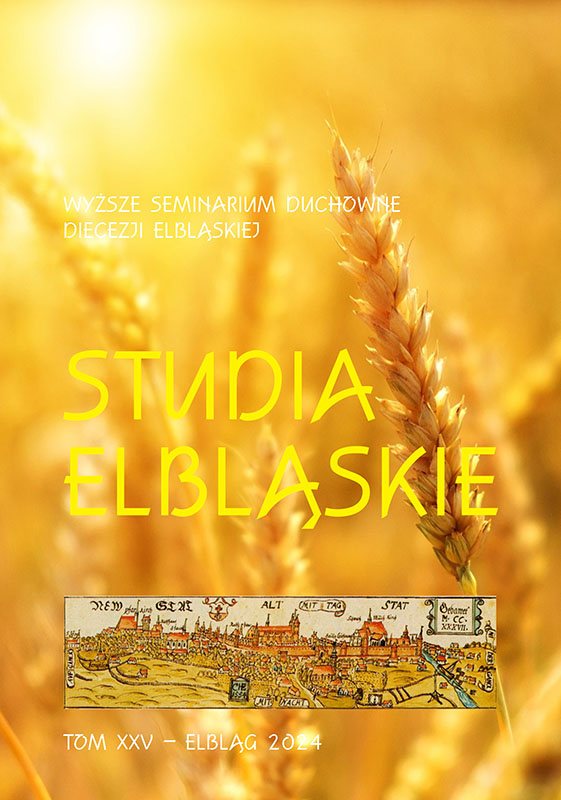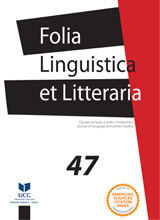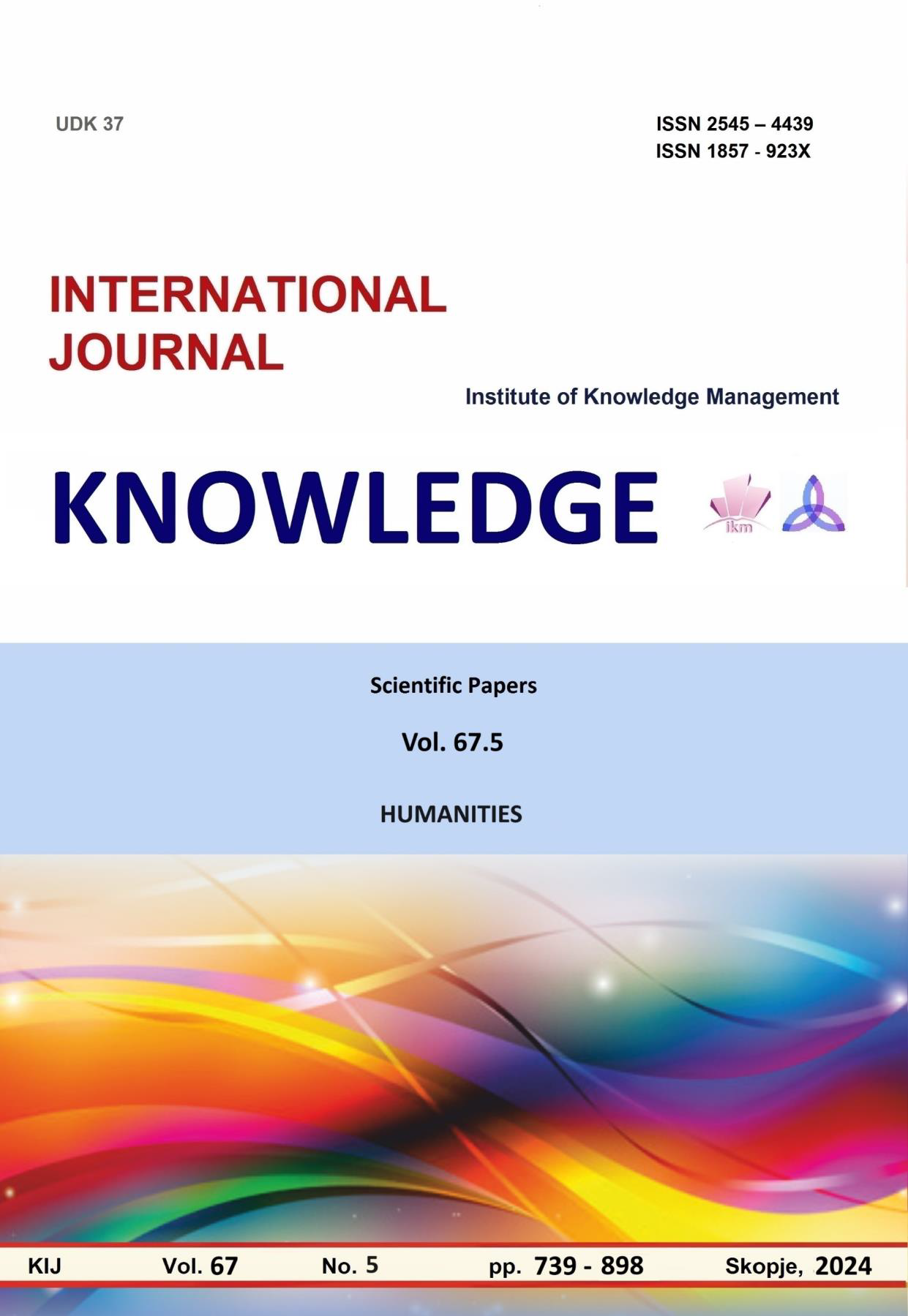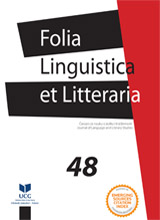Author(s): Dragana Kršenković Brković / Language(s): Serbian
Issue: 48/2024
“What forms are included under the autobiographical?” “How do women define the term autobiographical writing?” “What is the relation of genre to gender, unconscious to conscious, self to writing?” – these are just some of the many questions that authors have addressed in researching the autobiographical writing of women from the eighteenth to the twentieth centuries. This text examines the long process of transformation of autobiographical prose created by women (diaries, memoirs, letters, autobiographies, and magazines), with a special emphasis on the Virginia Woolf diaries. It refers to the research work of numerous feminist authors in interpreting and redefining this literary genre. Analyzing the changes in women's autobiographical writing from the eighteenth to the twentieth centuries, these authors highlighted the mechanisms used in patriarchal society to determine the identity of a woman and her self. They found a strong link between patriarchal cultural prejudices and the marginalization of women's culture. They showed the close connection between daily recording and women's search for self-definition, noticing that through the very process of writing diaries, memoirs, and autobiographies, women had created a common space. They revealed the peculiar characteristics of diary prose, such as the opposition between subjectivity and objectivity, the opposition between the public and the private voice, the opposition between 'what is dominant' and 'what is silent,' and so on. This text also indicates Woolf's influence in changing the traditional canon and the canon of traditional autobiographical texts. It explores how diary writing reflected on the author's writing, imprinting herself in the fiction she created. It illuminates the sources from which the author found literary themes, showing that many scenes from everyday life, books she read, or social events served as raw material for shaping her literary process. The text affirms the connection between, on the one hand, the 20th-century literary scene, especially the writing of women writers, and, on the other hand, all the changes, transformations, adaptations, and developments of the author's inner life, as well as her views on the world, art, and literature. “Virginia Woolf began keeping a regular diary in 1915. She did so until 1941, and the last note was written four days before her death,” wrote Leonard Woolf, Virginia's husband and editor of the book A Writer’s Diary: Being Extracts from the Diary of Virginia Woolf. The first edition of this book was published in London in 1953. Since then, for seven decades, Virginia Woolf's diary entries have received great attention. In the introduction to the book, Leonard Woolf states what he was particularly interested in during its preparation: “I carefully read the 26 volumes of the diary and made the extracts that I publish in this book, which is practically all that applies to her writing. I've included three more groups of clippings. The first contains a number of sections where Virginia Woolf apparently uses the diary as a method of practicing or trying out the art of writing. The second includes several records which I have chosen because they give the reader an idea of the direct impression which certain scenes and certain persons left on her mind, as the raw material of her art. Thirdly, I've included a number of entries in which she comments on the books she was reading” (Woolf ii). From the abundance of notes, Leonard chose those texts that best reflected, on the one hand, Virginia's introspection, contemplation, and deep immersion into herself, and on the other, the very process of her maturation and change, both in the personal and literary aspects. With that, he charted the path that Virginia had taken, building her unique voice. Reading Virginia Woolf's diary entries, the reader gets the impression that this woman writer, by writing numerous entries, notes, remarks, observations, letters, reminders, assertions, comments, statements, reflections, self-reflections, deliberations, and much more, has actually created her own literary laboratory. Existing theoretical reflections on autobiographical prose provide insight into the changes that have occurred over the past two centuries. At the same time, autobiographical writing is most often observed "from the doubled perspectives of historical and cultural analysis" (Benstock 8), according to Shari Benstock in The Private Self: Theory and Practice of Women's Autobiographical Writings, which she prepared and edited. In addition, the essay "Eighteenth-Century Women's Autobiographical Commonplaces" by Felicity Nussbaum is very interesting. The essay was published in The Autobiographical Subject: Gender and Ideology in EighteenthCentury England, in which she considered the interdependence and integration of genre, gender, and class in the important process of changing autobiographical writing in England from the 17th-century English writer and Puritan priest John Bunyan to the 18th-century writer Hester Thrale. In the aforementioned essay, Nussbaum emphasizes the fact that women who wrote diaries, memoirs, and autobiographies created a common space. Nussbaum calls it 'a common place of discourse,' a place where 'subject positions meet' and where the topic itself is a 'common place.' The journal intime, as it emerged in France in the 19th century, is essentially a private mode of writing. It takes as its subject the intimate description of one’s own mental and emotional consciousness. The early nineteenth-century journal intime was associated with women like George Sand. The subject of Philippa Lewis' research is the social framework in the mid19th century in which the journal intime was nourished. Her research was published in Intimacy and Distance: Conflicting Cultures in Nineteenth-Century France. In it, Lewis analyzes the culture of intimacy in art, architecture, and literature of the nineteenth century. She points to the existence of various literary forms in which the concept of intimacy was nurtured, from intimate poetry (poésie intime) and the intimate novel (roman intime), through travel stories, literary portraits, artistic critiques to personal diaries (journal intime). Lewis draws attention to the fact that the wonderful and rich diversity of literary and cultural forms in the culture of intimacy indicates a hierarchy of values. In that hierarchy, poésie intime was seen at the top but the journal intime at the edge of established values. The understanding of what a diary is and what it could be has changed during the 20th century. Instead of accepting the diary as a rigid daily recording of events, it becomes a "tool for using the full power of internal resources," claims Tristine Rainer in The New Diary: How to Use a Journal for Self-Guidance and Expanded Creativity. The New Diary – a term first used by Tristine Rainer – has become the literary form associated "with self-exploration, creativity, personal growth, but also with healing and therapy" (Rainer ii). A major change in the understanding of the diary is illustrated by the attitude of Janet Varner Gunn. She believes that the autobiographical perspective involves observing, considering, and analyzing oneself, but also bringing oneself into language. "While someone is writing a diary, a memoir, or autobiography, they should be ready to meet 'writing' and 'selfhood,'" (Gunn 11). In Autobiography: Toward a Poetics of Experience, Gunn argues that autobiographies, diaries, and memoirs must be understood much more broadly than is commonly thought – they are a cultural act of 'reading' oneself, not merely a personal act of 'writing' oneself. "The self that is being read (both by the author and the reader) is an exposed Self, not a hidden Self – that Self appears in the world and can be achieved" (Gunn 9), she emphasizes. In the process of revaluing, redefining, and re-mapping the diary during the 20th century, feminist theorists focused on many other aspects of autobiographical discourse: Redefining the diary as an important form of autobiographical prose. Indicating particular characteristics of daily prose, such as the opposition between subjectivity and objectivity, the opposition between public and private voice, or the opposition between 'what is dominant' and 'what is silenced.' Changing the way the diary is viewed, turning to philosophical, social, psychological, and literary interpretation. Indicating ontological, archetypal, and transcendental characteristics in the diary. Highlighting the narrative chronology. Deepening our understanding of the narratological features of daily discourse. Jane Marcus has made a strong contribution to this research effort. She, like other authors, pointed out that critical interest in autobiographical prose, including diaries written by women, began relatively recently when diaries, memoirs, and autobiographies were seen, above all, as literary works. Historically, they were 'pushed' into the background. "As a rule, women's literary writing was classified as a private voice, which further led to their silence," Marcus said in the study Virginia Woolf and the Language of Patriarchy more than once. Marcus also wrote about this in the essay "Invincible Mediocrity: The Private Selves of Public Women." She argued that “the mediocrity of the 'genre' of women’s autobiographical writings, in terms of the patriarchal definition of superior forms and literary subjects, allowed these generic forms to continue in existence, overlooked by the patriarchy as unworthy of notice” (Benstock 8). Further, Marcus concludes that “these women consciously ‘resigned’ from public discourse, enacting a deliberate resignation from the public world and patriarchal history which had already or was expected to erase their names and works.” In addition, she suggests that autobiography is a ‘rehearsal for other art forms,’ a rehearsal that makes the writer a reader of culture” (9). This renowned feminist literary scholar has offered an original interpretation of Virginia Woolf's work. Rejecting criticisms that ignored feminist, pacifist, and socialist themes in most of Woolf's work, including her diaries, Marcus considered Woolf to be the first modern socialist-oriented feminist critic. Marcus argues that Woolf transformed the inherited language of history, law, and political reforms unto a feminist, socialist, pacifist, and antifascist critique of patriarchy. Marcus' understanding of the place and role of Virginia Woolf in the larger context of English literature has significantly impacted the new mapping of Woolf on the English and world literary scene. In the critical theoretical reflections of the 20th century, which deepened our view of autobiographical prose, the research work of James Olney stands out. In the essay "Some Versions of Memory/Some Versions of Bios: The Ontology of Autobiography," he analyzes diaries, memoirs, and autobiographies from various angles, deepening their importance. Olney offers an explanation for the reawakened interest in the genre. It stems, he suggests, from a shift in attention “from bios to autos — from the life to the self.” That shift was “largely responsible for opening things up and turning them in a philosophical, psychological, and literary direction” (Olney 19). Olney believes there are many ways to understand the life around which autobiography has formed. We can understand it as a vital impulse, the impulse of life, which is transformed so that "you live through a unique medium of the individual" and through a particular "physical configuration of the individual." We can also interpret it as "a consciousness, pure and simple, a consciousness that does not refer to any objects outside itself." Additionally, we can see it as the "moral voice of the individual being" (Olney 236-267). Olney points out that the described life in them "does not extend back in time," but rather extends "to the root of the individual being." He highlights the fact that time in diaries, memoirs, or autobiographies is “a-temporal, focused on vertical displacement from consciousness to unconscious, not on horizontal displacement from present to past” (Ibid.). By recognizing in diaries their transcendent, ontological, and archetypal properties, Olney made a significant contribution to the revaluation and remapping of this specific literary form. Virginia Woolf's diary entries indicate the author's constant two-pronged quest for identity and writing. The narrative she created, as well as her style, points to a strong opposition to common practices and cultural stereotypes in which a woman's own self is systematically subordinated, diminished, or completely denied. For Woolf, the diary is a place for female rebellion – above all, against a rigid patriarchy. According to her, a woman in her diary can and should destabilize social and literary meanings (by overcoming the structural and poetic limitations of the genre she deals with) and is intensely exploring ways to rehabilitate the marginalized whose voices have been 'silenced' by patriarchy (the term 'silenced voice' is used by Gloria Bowles in Going Back Through My Journals: The Unsettled Self). Through the process of condensation, self-understanding, and selfinterpretation, Woolf deals with issues of freedom, communication, private and public, personal and political, individual and social in her diaries. Woolf also insists on a critique of established views of the self to include the female experience. From the position of a female subject, Woolf sees her diaries as: A space of articulation (in which she can bring her different ideas into a sense that they function as a new entity dominated by a transnational perspective). A space for self-observation (being a new position of the diary author). A space in which she can incorporate herself and the self of her female subject into the text. A space in which she can overcome imposed social models and roles. A space that contributes to the creation of potential for social transformation. A space in which she can question the relationship between language and the world of fiction, which is new because she creates it. Using the diary as a public sphere and a field for public speech, Woolf sought not only to portray her everyday life but also to speak about her vision of literature, to express her humanist, aesthetic, philosophical, and metaphysical reflections on art and life, to express her longing for originality, and to encourage and inspire contemporary women writers to write about topics that interest them, to surrender to their inner vocation, and so on. Everyone agrees on one thing: Virginia Woolf has made a significant contribution to changing the traditional literary canon. It should be added – Virginia influenced the change of the canon of traditional autobiographical texts with her diaries.
More...






